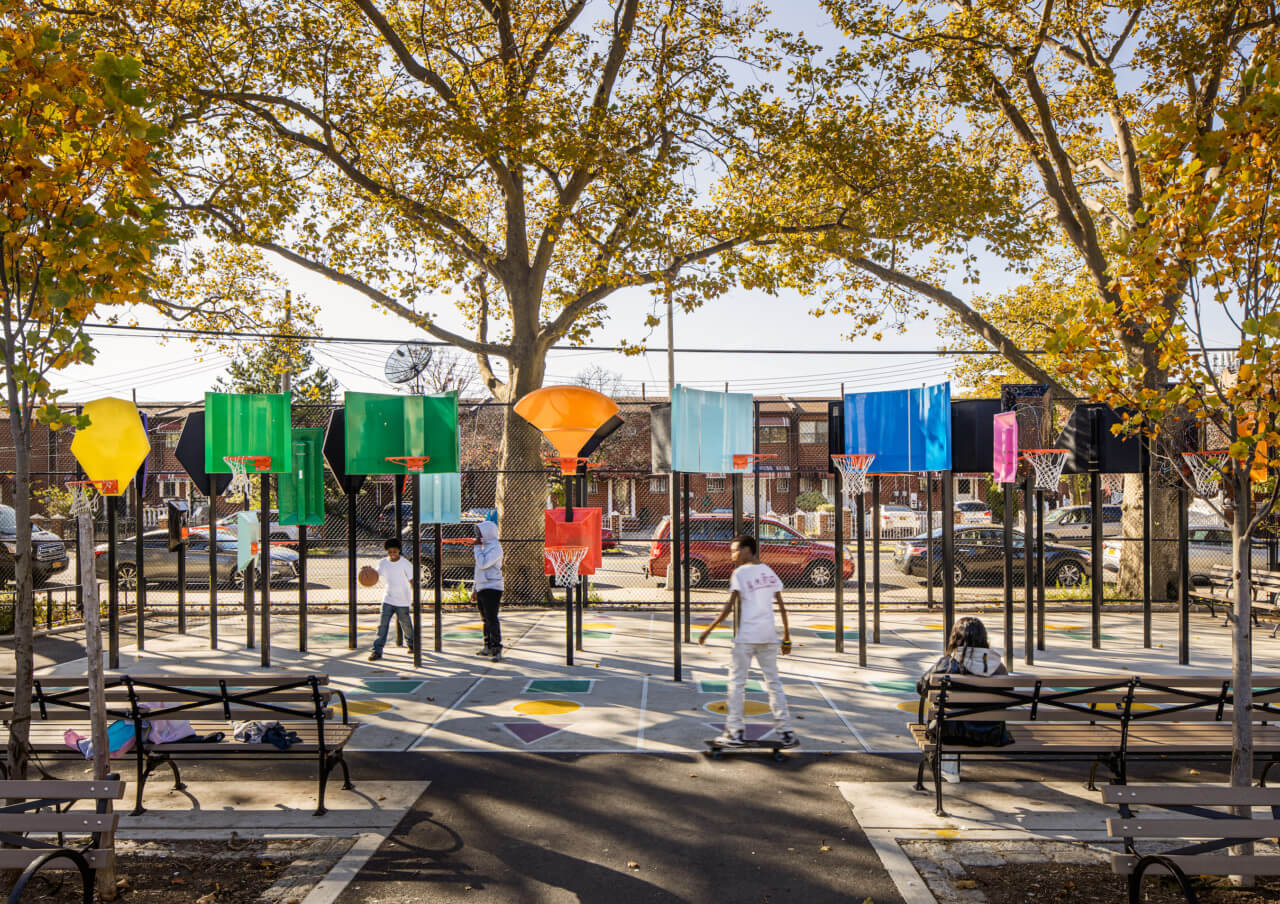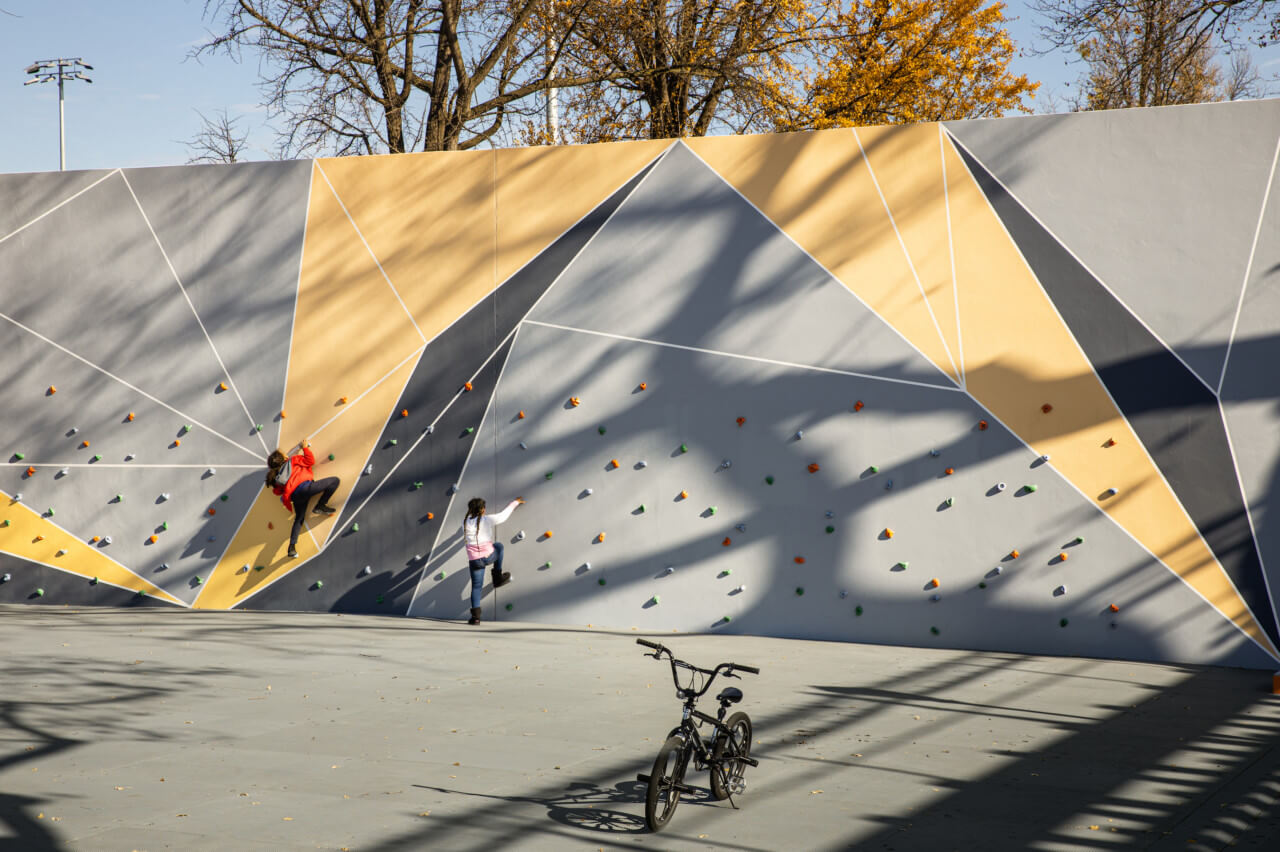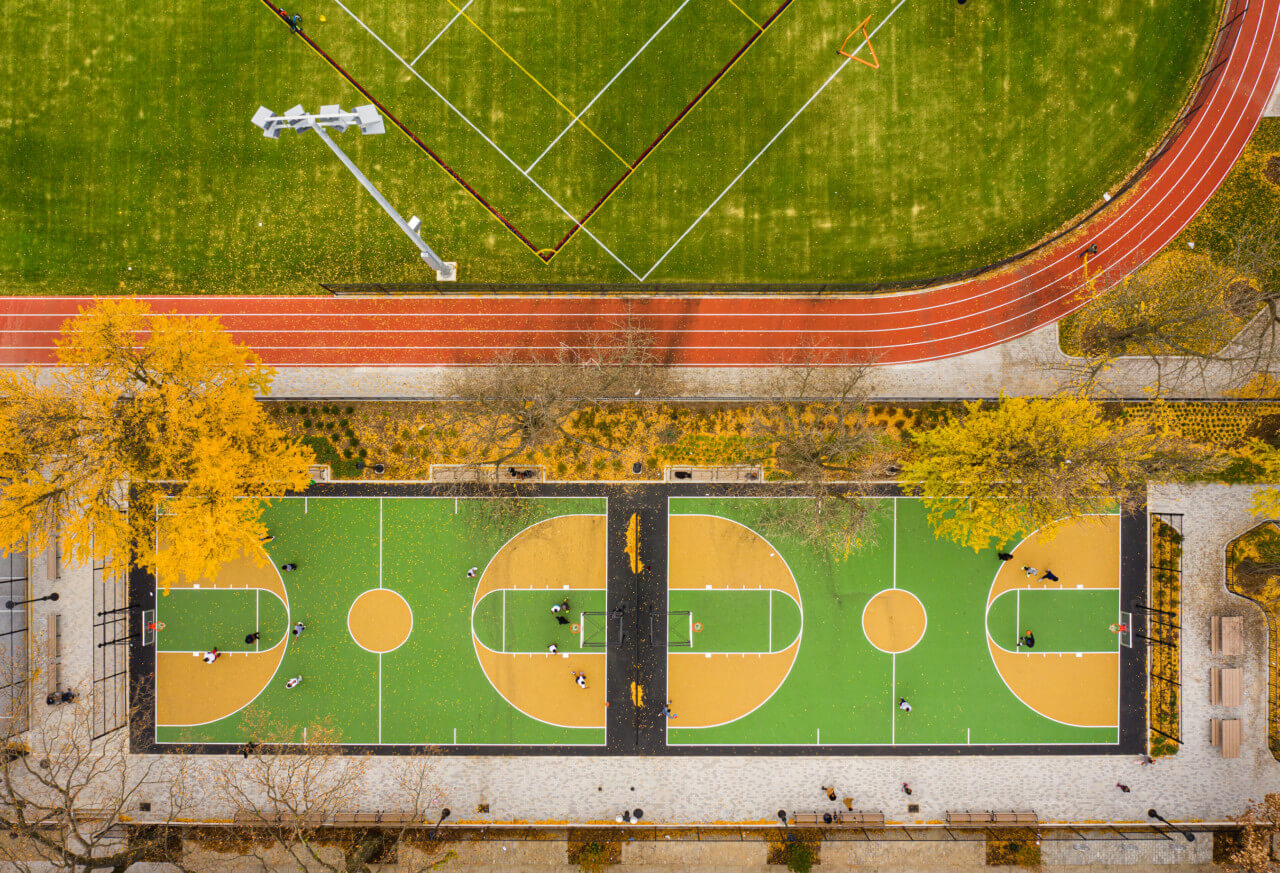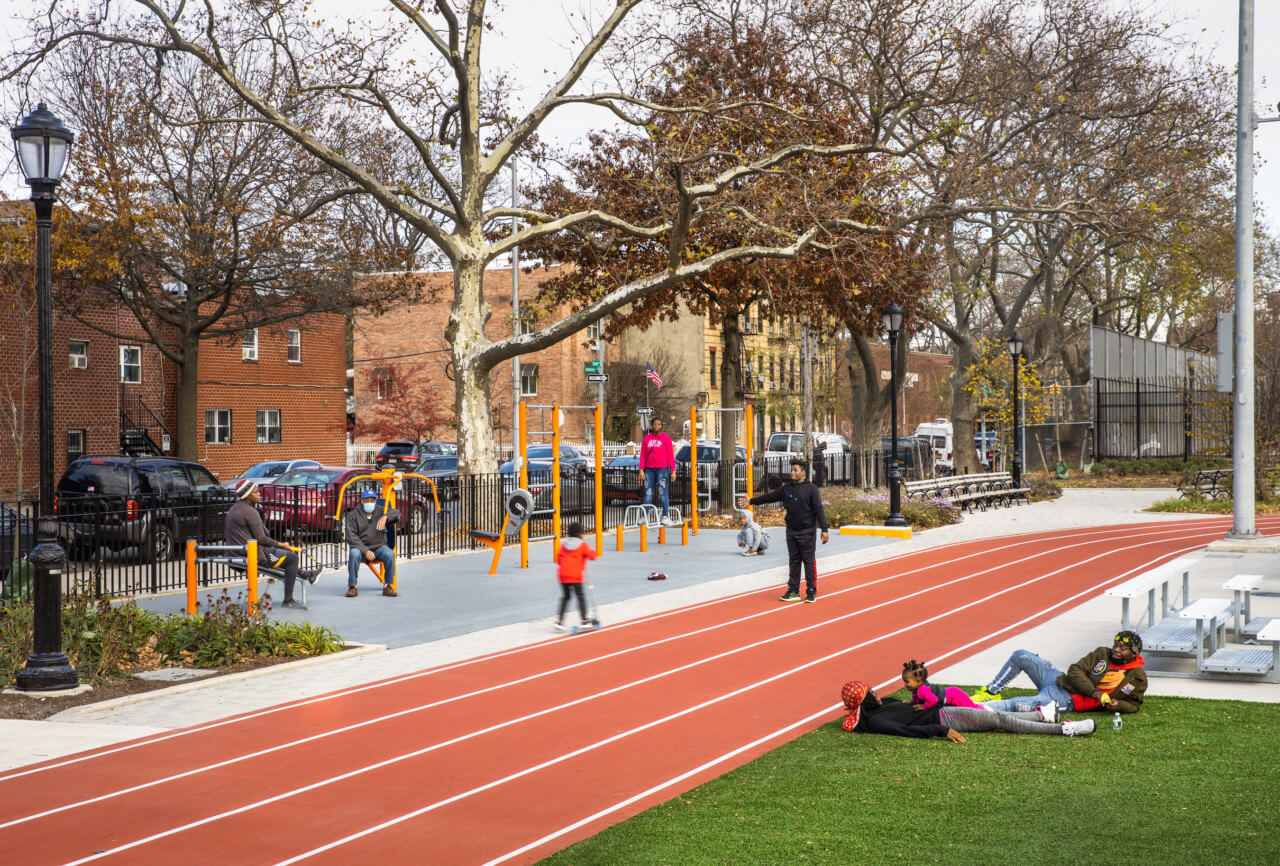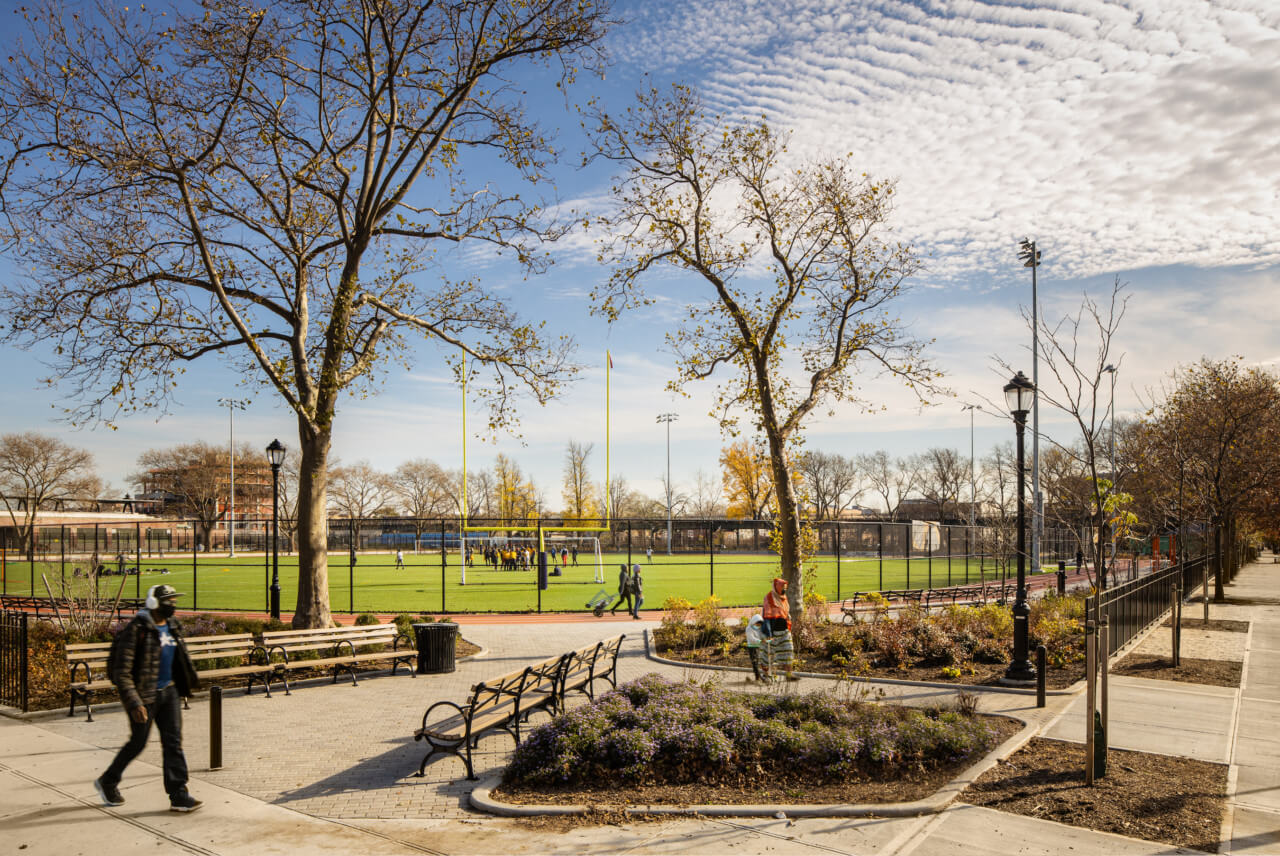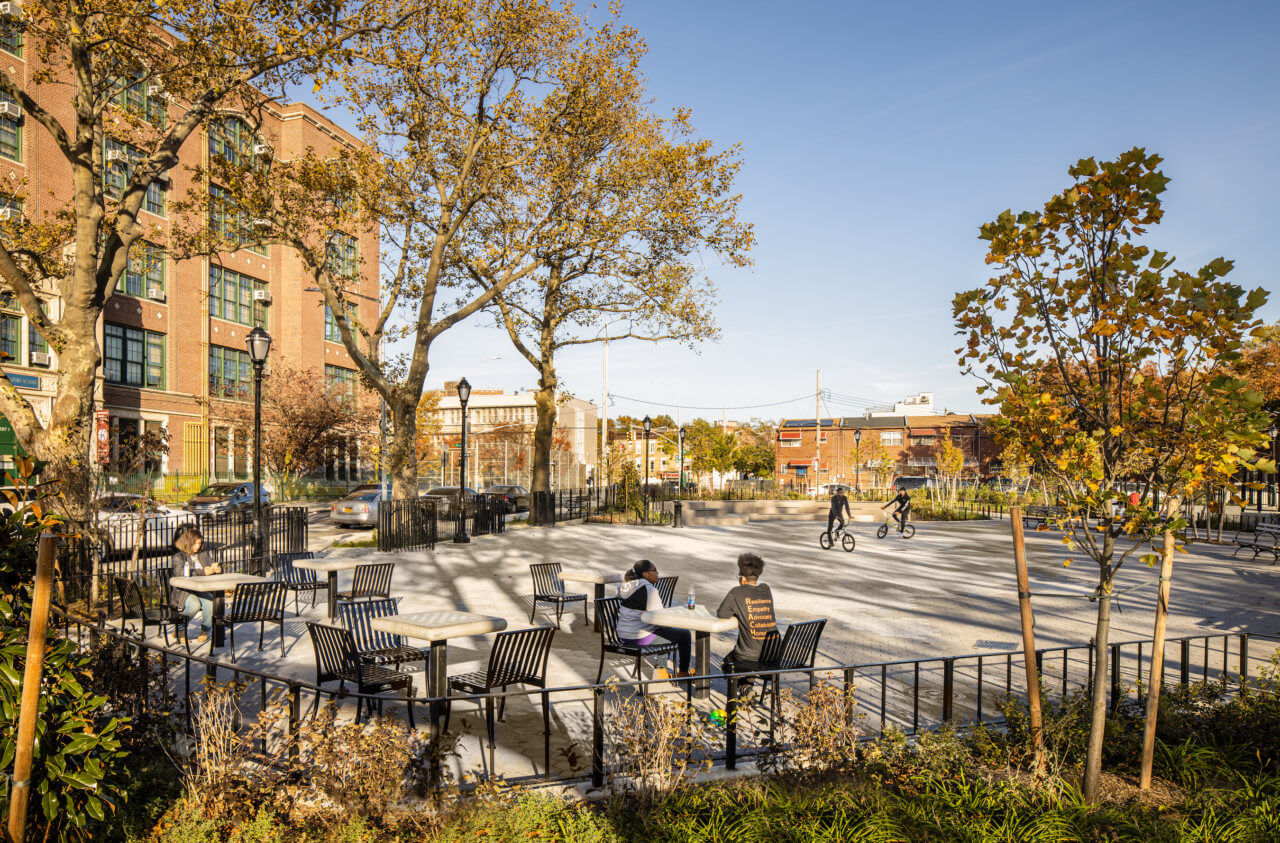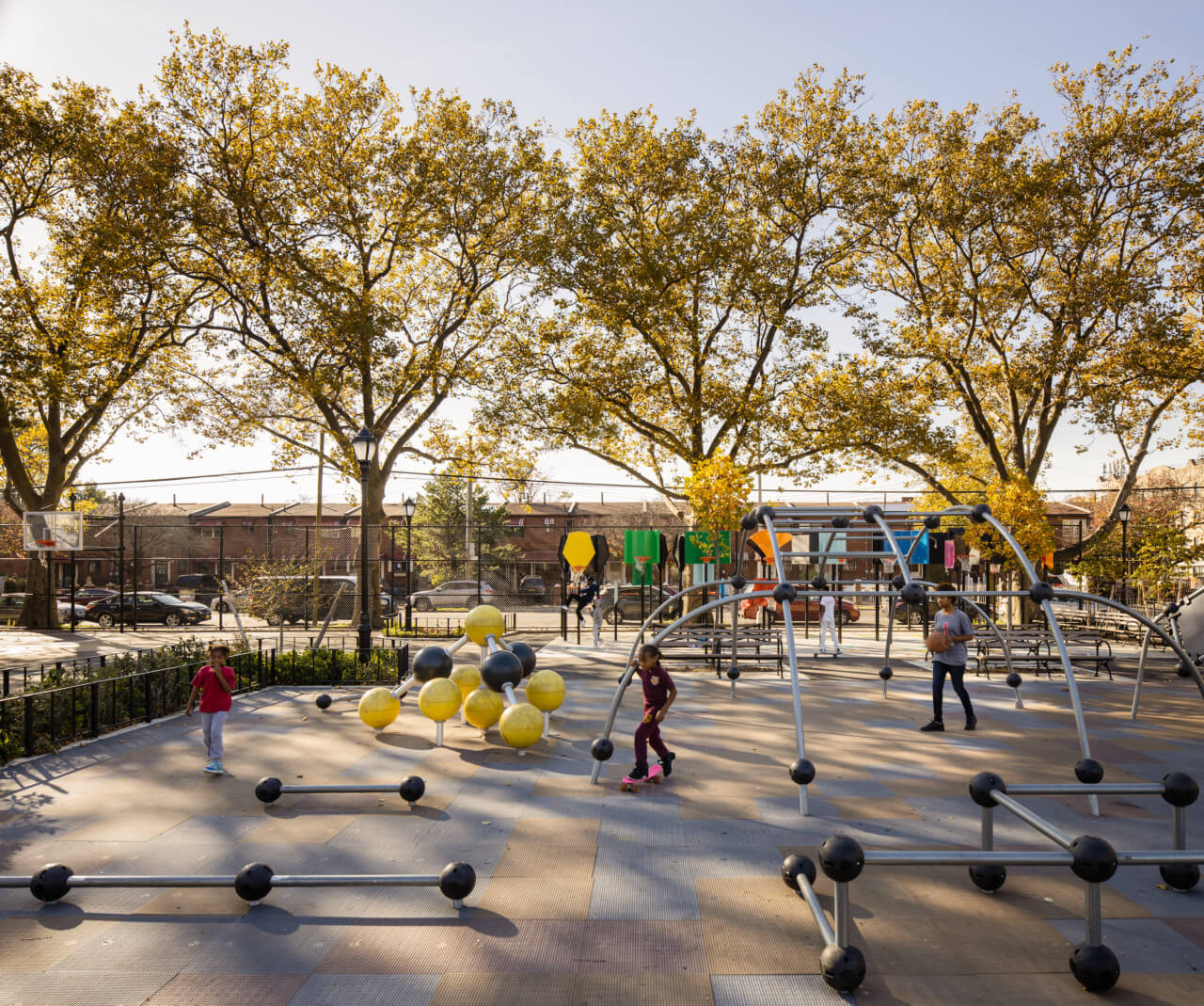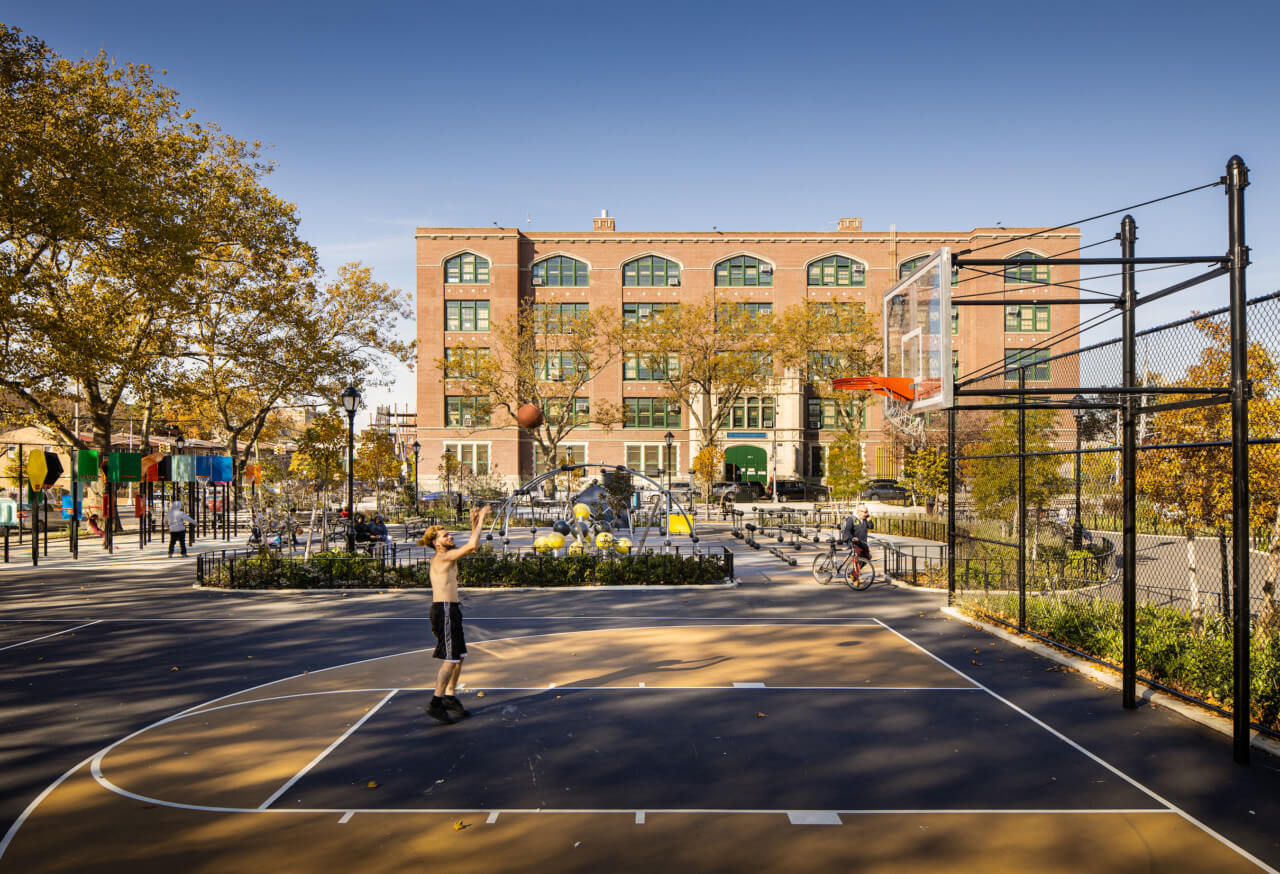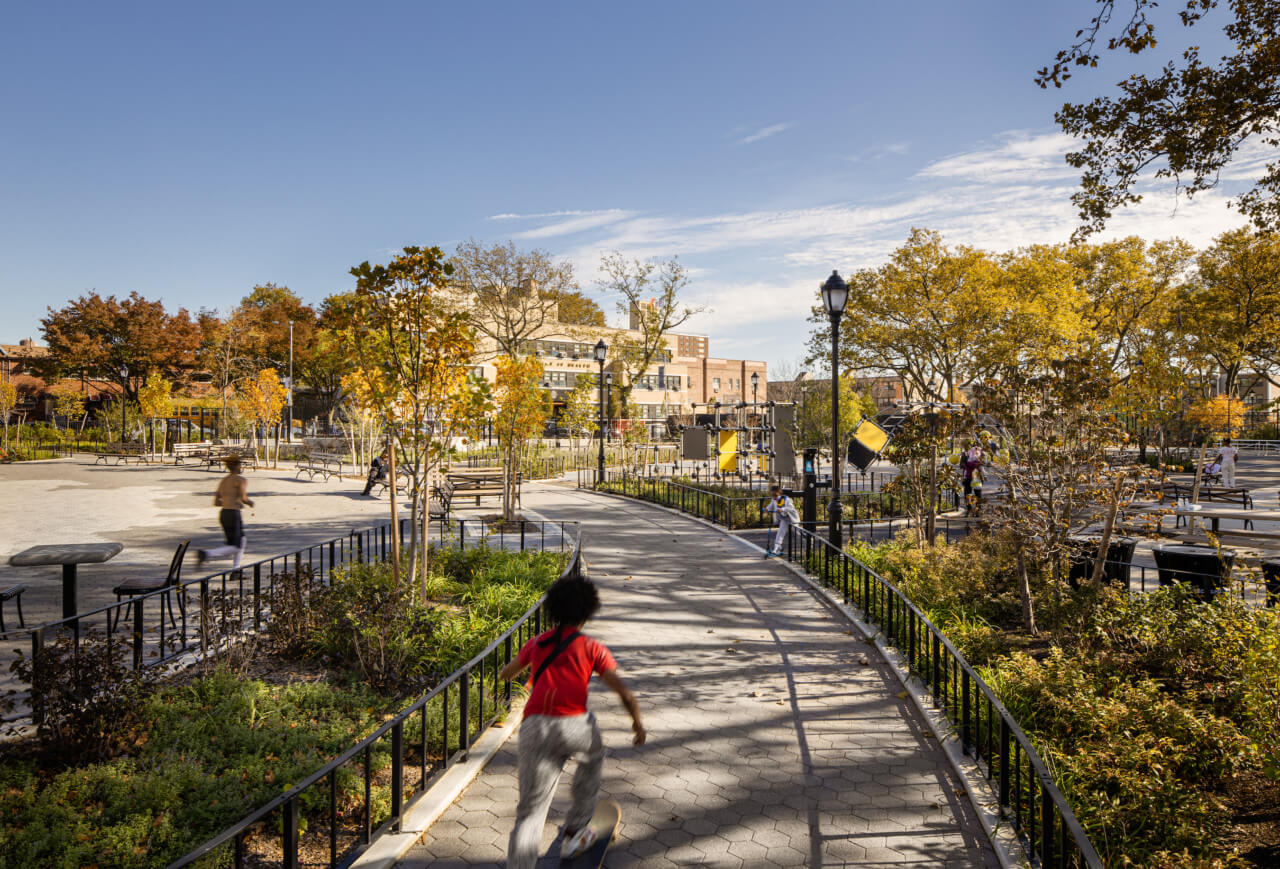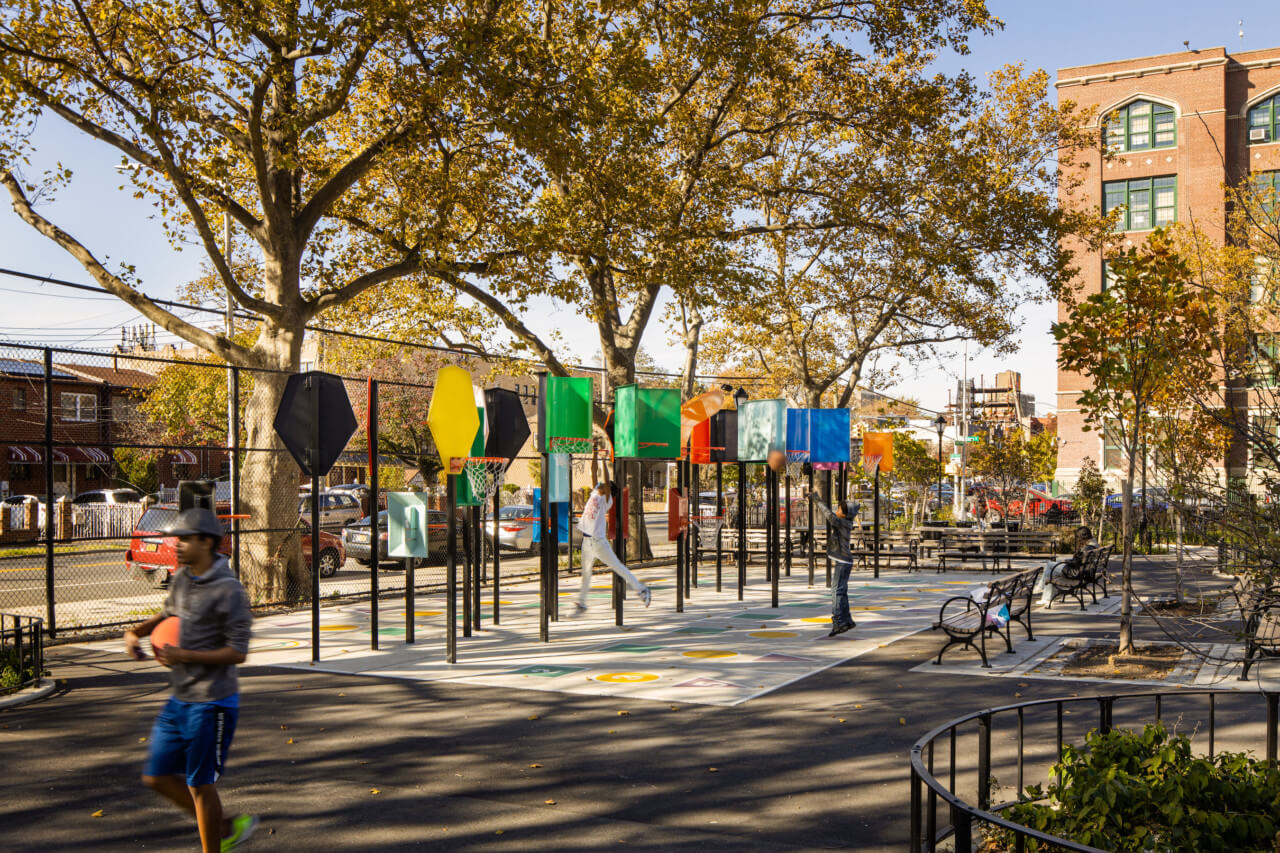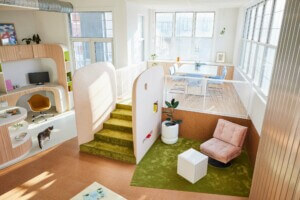Betsy Head has got a whole new look. The 106-year-old public park in Brownsville, Brooklyn, fully reopened late last year after a transformative $30 million redesign by landscape architects Abel Bainnson Butz, LLP (ABB).
Best known for its landmark Art Moderne bathhouse and swimming pool complex widely considered one of NYC Parks’ finest Works Progress Administration (WPA)-era architectural treasures, Betsy Head Park can now claim several first-in-Brownsville (and the city) features including: a parkour fitness course for teens, an inclusionary self-competitive basketball circuit for players of all ages and abilities, and a destination skate park designed by Spohn Ranch in collaboration with ABB. Other updates include outdoor chess tables fabricated from granite and a traverse climbing wall along with lushly planted areas and tree-lined winding pathways that have rendered an underutilized, vegetation-barren asphalt lot in the north section of the park unrecognizable.
Brownsville, a mostly residential neighborhood in eastern Brooklyn with one of the highest poverty rates in the city, has long suffered a deficit in parkland and open public spaces. The ABB team aimed to transform declining Betsy Head, the largest park in the neighborhood and quite the hotspot way back when, into a multigenerational community-wide destination for the 21st century. Thus the decision to focus on adaptable design that champions openness, accessibility, and the specific needs of an underserved neighborhood when proximity to outdoor public spaces with multiple opportunities for active and passive forms of recreation was all the more crucial.
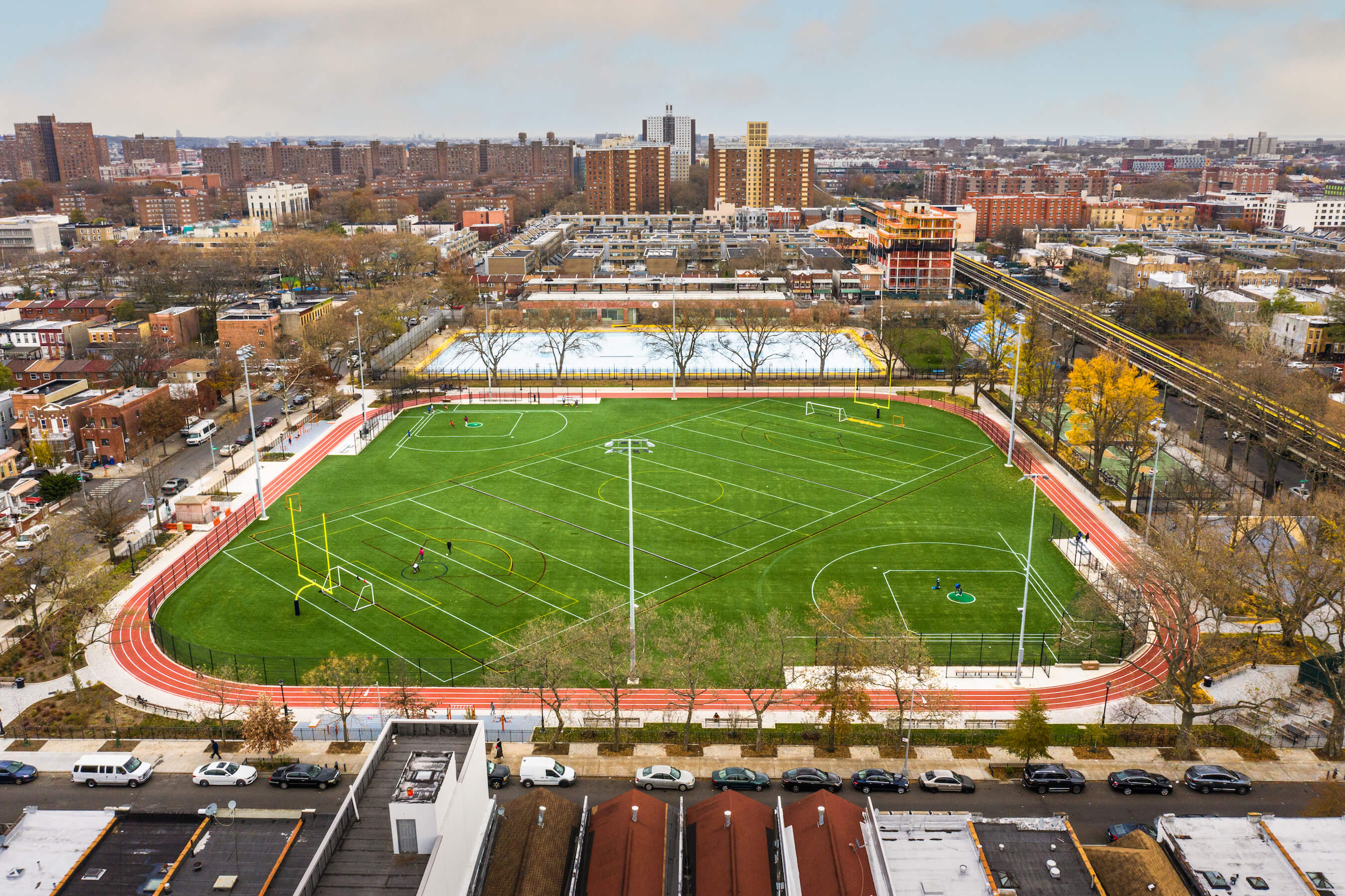
“We’ve [landscape architects and park designers] always known the power of open green spaces and their positive impact,” David Weissman, ABB principal and project lead for the Betsy Head Park redesign, told AN. “And I think because of the pandemic, a lot of other people now understand their importance, too.”
The multiphase overhaul of Betsy Head Park was carried out as part of Mayor Bill de Blasio’s $105 million Anchor Parks initiative, meant to breathe new life into a quartet of aging grand dames of the NYC Parks system. In addition to Betsy Head, other parks to receive improvements-earmarked funding as part of the 2016 program include Astoria Park in Queens, Manhattan’s Highbridge Park, and St. Mary’s Park in the Bronx. Also included in the mix is Staten Island’s Freshkills Park, an over 2,000-acre new park—the largest developed in New York City since the 19th century—designed by James Corner Field Operations. It’s slated to open in 2022.
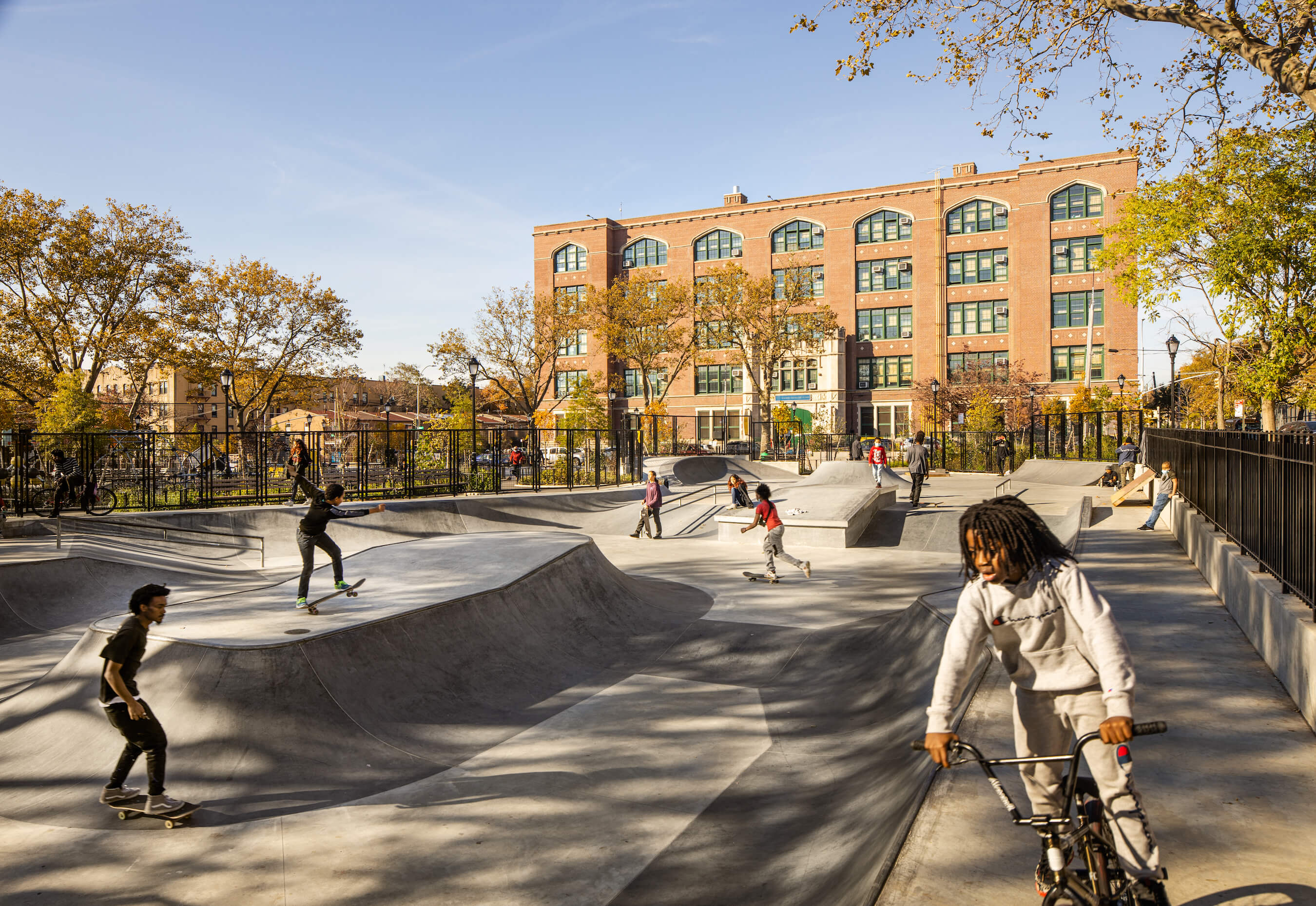
At 10.5 acres, Betsy Head Park, named after a wealthy British transplant who left a bulk of her fortune to the city for “the purchase and improvement of grounds for the purposes of health and recreation” when she died in 1907, is by far the smallest Anchor Park of the bunch. The park, built as a project of the Public Recreation Commission and featuring the first public outdoor swimming pool located in a New York City park, opened to great fanfare in 1915. In 1936, Betsy Head was redesigned under the watch of Park Commissioner Robert Moses at which point the John Matthews Hatton-designed Betsy Head Play Center and its massive new marquee pool—one of eleven then-state-of-the-art aquatic hubs built across the city with WPA funds—was realized.
While Betsy Head has been treated to a number of facelifts and upgrades over the decades, none since the 1936 redesign have been as dramatic as last year’s.
The park is unique in that its program is split between two non-contiguous parcels separated by Dumont Avenue. The northern parcel is home to a Rockwell Group-designed play area known as the Imagination Playground, completed in 2016 to replace an aging existing playground. Just above the Imagination Playground is a compact but varied swath of new parkland that was previously the aforementioned asphalt lot. “It’s really rare for New York City,” Weissman said of working with an asphalt lot within a city park. “It was essentially a blank slate.”
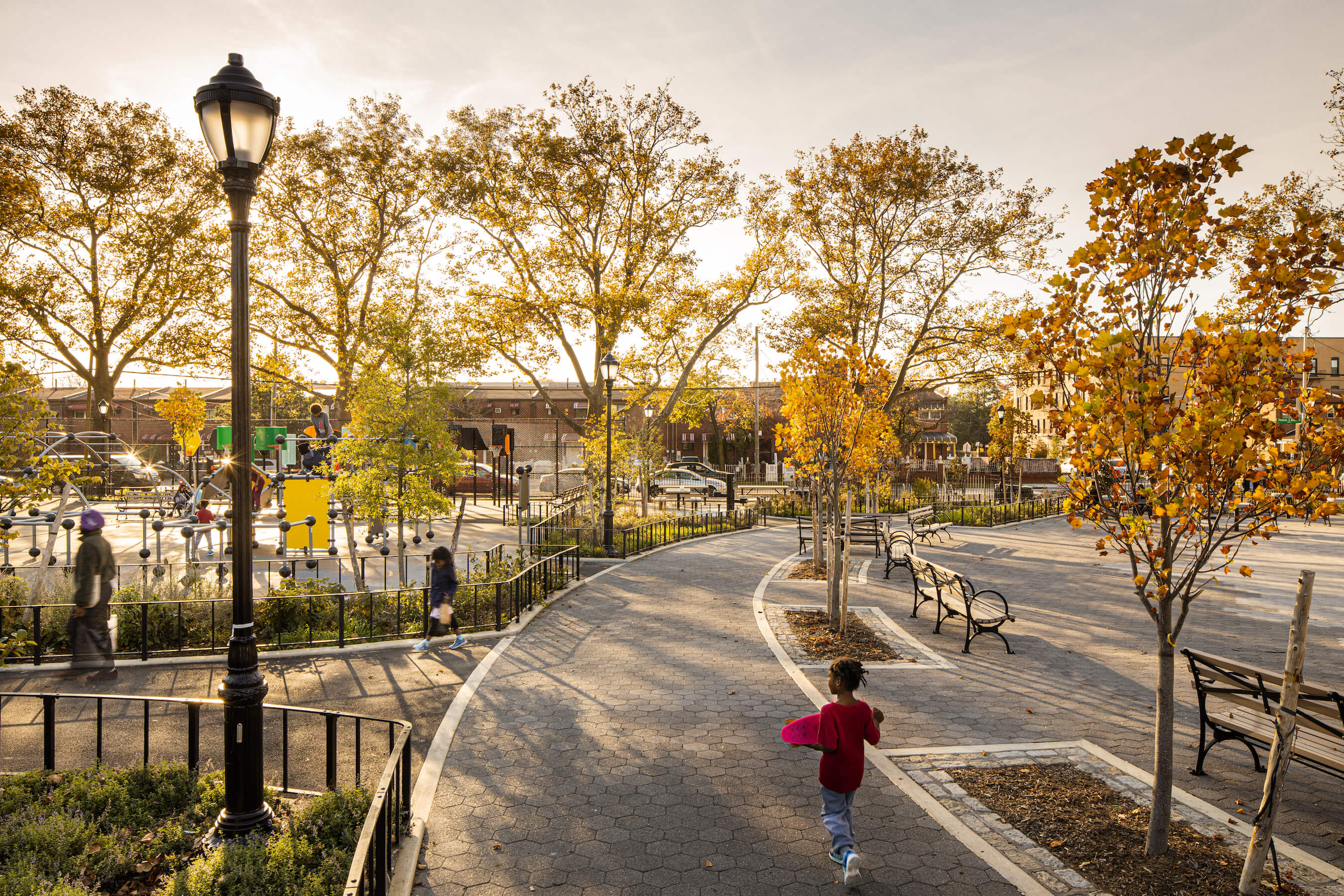
Here, ABB packed a slew of features into a tree-lined landscape laced with curvilinear pathways. They include the plaza-style sunken skate park, the parkour course (the first in the city, with another designed by ABB on the way at Riverside Park South), and a flexible event space with amphitheater-style seating envisioned for a number of different community events like outdoor movie screenings, farmers markets, and group exercise gatherings for yoga, tai chi, and the like. The space could also play host to an outdoor classroom.
In the northern section of the park is the bank shot basketball circuit, which Weissman described as a “non-conventionally configured basketball game that’s all about non-aggressive play and being inclusionary.”
“The different shapes, colors, and heights for the backboards allow for users in different age groups and of different abilities to have that differentiation of possibilities, whereas in traditional basketball courts you have the one highest,” said Weissman.
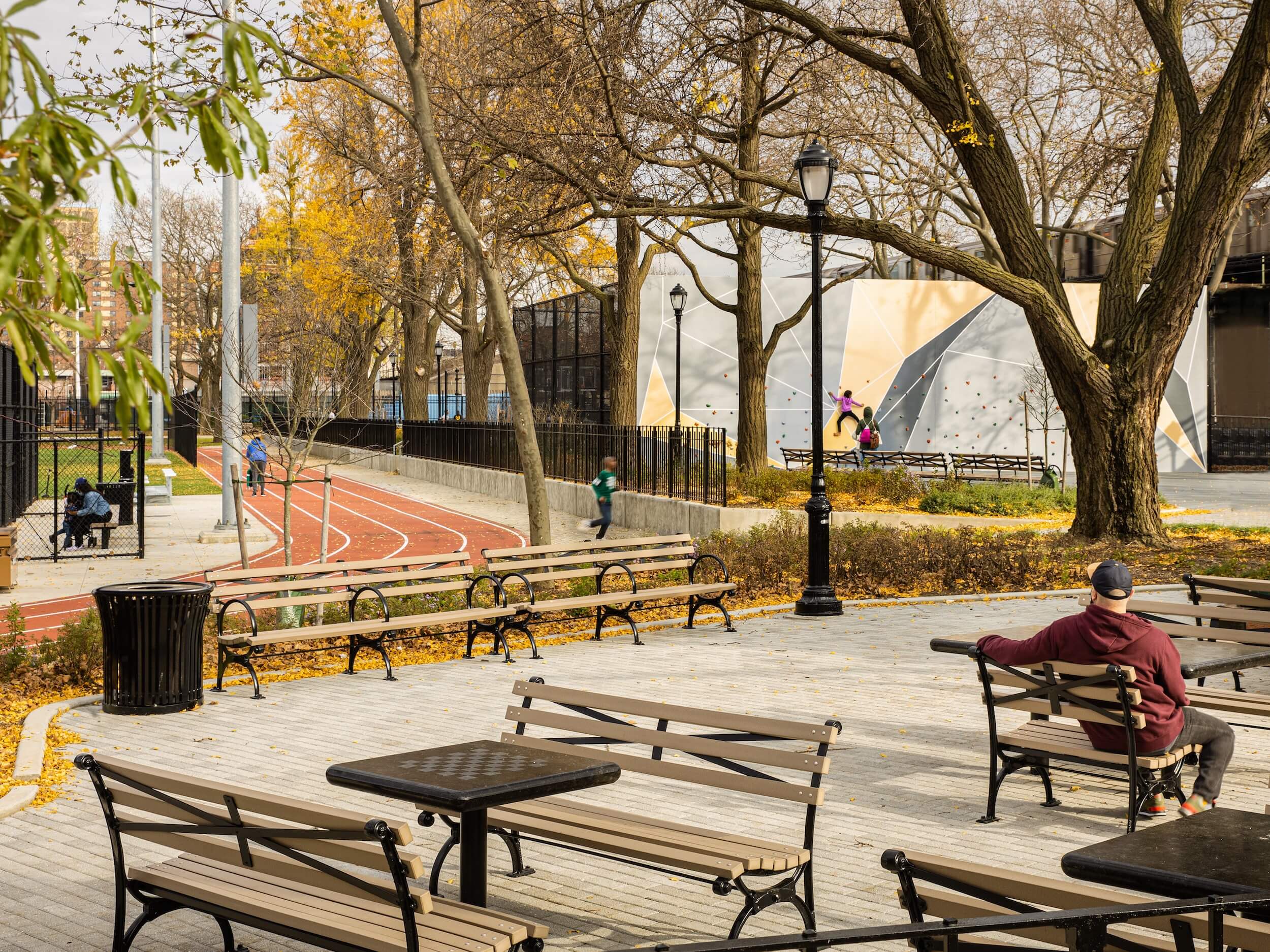
Across Dumont Avenue to the southwest at the second larger section of the park, ABB converted a natural turf field into a 129,000-square-foot synthetic turf field that can accommodate a greater range of sports—softball, soccer, football, and boys and girls lacrosse—than its predecessor. Getting more out of the field through new markings was one of the leading requests from the community according to Weissman. It’s a rather simple fix that enables a diverse number of teams to take full advantage of the largest feature of the park.
The multipurpose field itself is encircled by a four-lane running track while several new and updated features like the traverse wall, handball and basketball courts, seating areas, a reconstructed comfort station, and designated exercise stations with formal strength training equipment are positioned around the periphery of the site. (The south parcel also includes the historic Betsy Head Play Center, which was not part of the recent park refresh).
“The design process, particularly for these Anchor Parks, is all about community and understanding what they want,” said Weissman. “So, in collaboration with NYC Parks, we held several visioning sessions with the community—and they were really energetic and enthusiastic about it.”
“Working in the public realm, we are very aware that these parks in these communities are for the community, and not for me and my colleagues,” Weissman added. “We really need to be in tune with what the community wants, what works, and what doesn’t work because ultimately when we leave the park it is theirs, and we want them to embrace it and take pride in it.”






